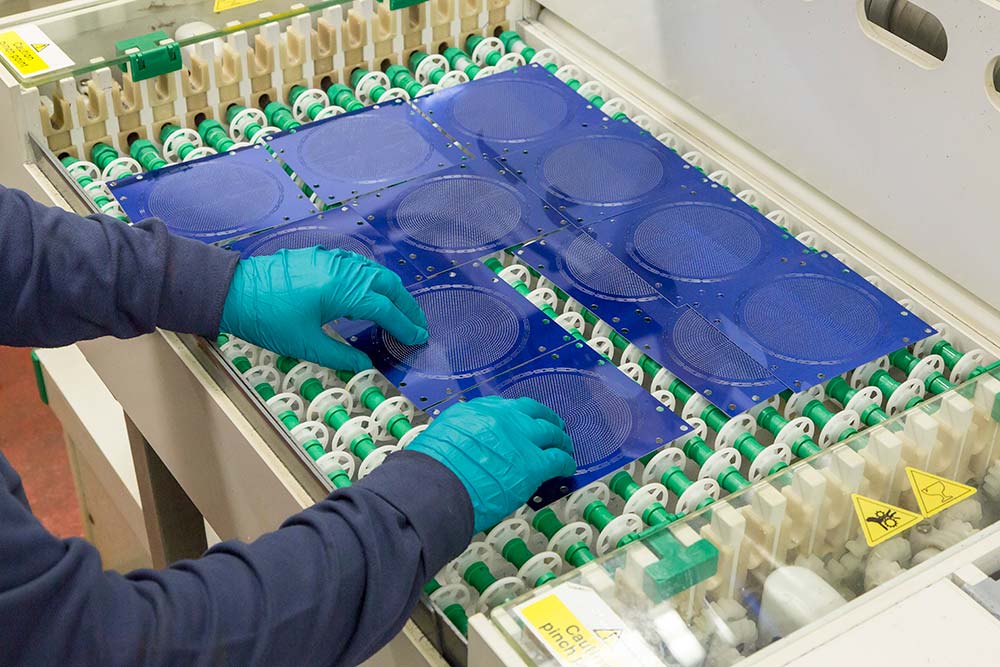Photochemical etching or photo chemical machining is one of the most familiar manufacturing techniques for manufacturing various delicate products from metal substrates. However, this process has drawbacks: it is relatively expensive and suitable for selective metals only. To enhance their decision-making, industries relying on PCE need to know the limitations of photochemical etching.
What is Photochemical Etching?
PhotoChemical etching uses the chemical etching technique in which material is etched away based on the photomask. It is mainly applied in manufacturing components with complex structures for uses in aerospace, electronics, or medical purposes. While the process excels in surface finishing and producing intricate patterns , its precision limits and thin material etching challenges often pose difficulties.
Photochemical etching is widely used in industries and is one of the most effective and inexpensive methods for the production of complex metal parts. At the same time, the technique is very accurate, and taking into consideration complex patterns, it has several disadvantages. Knowledge of these constraints are important, especially for industries that want to apply this process optimally while considering the possible drawbacks.
Process Overview
Procedure in Photochemical etching
Designing the Photomask: There is the formation of a photomask, which outlines the pattern of the circuit to be produced.
Surface Preparation : Surfaces of the metal must first be cleaned and then subjected to a layer of a photosensitive material known as the resistor.
Etching Process and Rinsing: The final process of development exposes the metal to a selective chemical etching process that further eradicates unnecessary shapes and sizes on the surface of the metal, the material gets rinsed to stop the chemical reactions.
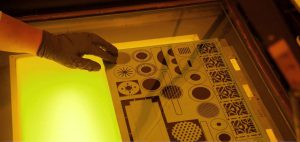
Materials Used
Stainless steel, copper, nickel alloys, and similar materials can be etched easily by using the photochemical etching method. Substances used, including ferric chloride, are based on compatibility with the material surface.
The Advantages and Limitations of Photochemical Etching
Pros
- Highly skilled in producing very complex designs.
- No direct interaction and mechanical pressure were applied to the experimental samples.
- Applicable with material types that have difficult-to-machine characteristics such as stainless steel and copper alloys.
- In comparison to other machining methods, it has a low cost and does not require highly specialized tools.
Cons
- It restricts depth and surface flatness to the material being used and the quality of its starting surface.
- Issues that can be characterized by deep or narrow grooves.
- Potential environmental effects because of chemical waste.
- Assessment of components with small ranges of variation will not achieve high levels of accuracy.

How Does Photochemical Etching Work?
- Photomask Creation: A desired photomask is prepared with appropriate patterns on it.
- Material Preparation: The metal is then polished and applied with a photosensitive resistor or cover.
- Exposure and Development: UV light cures the particular regions where paint is applied while other regions that have no protection wash away during development.
- Etching: After the gel or dissolved chemical solution washes over the item, it dissolves the exposed metal and keeps the intended design on the item.
- Finishing : The resist is removed, and the component is designed or polished.
Applications of Photochemical Machining
Photochemical machining is widely used in industries like:
- Aerospace: In particular, for lightweight components with difficult shapes and forms.
- Electronics: Manufacturing coil springs, connectors, and shielding parts.
- Medical: Designing and manufacturing surgical tools, and maker of high-accuracy implant structures.
Despite these applications, the limitations of chemical machining in aerospace often arise due to the need for exact tolerances.
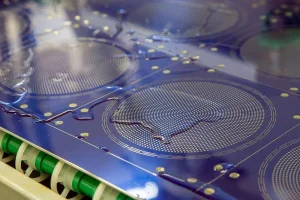
Primary Limitations of Photochemical Etching
Initial surface quality
The performance of PCE on the initial state of the metal surface on which the thin layer is formed. According to the texture of the surface, the final, smooth product mimics the roughness or unevenness, which is not suitable for use in polishing or other tasks . If the surface is rough or uneven, the final product reflects these imperfections, making it unsuitable for the precision limits of chemical machining.
Parallel Surface Processing
The photons used in photochemical etching have the capability to etching processes the materials parallel to their respective surface. This constraint renders it difficult to realize geometries that are substantially different from the reference geometry.
Thickness Constraints
That is working with very thin or very thick materials is problematic. Very thin layers tend to undergo deformation during processing whereas very thick layers may not be etched uniformly. This limitation makes it rather less suitable for use in cases where structural factors or fine design are important.
Edge Geometry Challenges
The chemical nature of PCE leads to rounded edges rather than sharp or vertical walls of the graph. Although special etchants can produce beveled edges, the contouring of the required shape remains a problem to date.
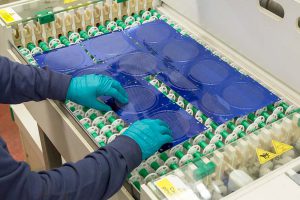
Limitations in Precision
Tolerance Levels
Unfortunately, photochemical etching has difficulties in achieving tight tolerance because of the fluctuation of etch concentration and conditions. This is particularly an issue for high-precision part types.
Small and Narrow Features
During etching, the formation of gases results in acts as barriers to chemical attack in narrow channels or at deeper sections, resulting in variations in the end profile of the groove or cut.
Limitations on the material and design
Unsuitable for Complex Shapes
PCE is not suitable for parts with rough surfaces or complex designs with lots of geometrical depth since the process is best suited for planar workpieces.
Inefficiency for Small Holes
The process creates holes with non-uniform diameter and attitude, inclined towards one of the axes, thus not suitable for highly specialized drilling.
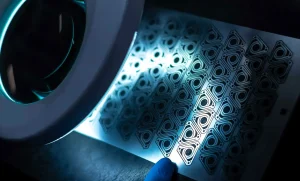
Challenges in Process Control
Chemical Behavior
Since the etchant is sensitive to changes in temperature, the corrosive action of the solution is not uniform, and the process requires close supervision.
Bubble Formation
The resist layer holds the shadowing of the gas bubbles produced during the etching of the surface under the layer. Although mechanical stirring or advanced resist materials reduce this problem, they can never get rid of it completely.
Narrow and Deep grooves
This results in a process that is notorious for poor ability to handle narrow and deep grooves, as, for instance, due to the aggregation of gas bubbles under the resist layer that leads to uneven corrosion. For instance, where the grooves are smaller than 4 mm, the chances are high that a defect will occur.
Environmental and Operation Limitations
Waste Management
The chemical byproducts derived from PCE need special handling to prevent the pollution of the environment. This is attainable at the cost of additional operational overheads and complications. Some of the chemicals that are used in photochemical etching contain pollutants that will cause pollution of the environment. Proper disposal and recycling methods are essential to mitigate the environmental impact of photochemical etching.
Time and Labor Requirements
To attain precision, work requires additional work such as peeling the edges of a resist or even ensuring equal distribution of a chemical compound, and so on, which can be cumbersome.
Photochemical Machining vs Laser Cutting
When comparing photochemical machining vs laser cutting, the latter offers greater precision and the ability to work with thicker materials. However, PCE has the advantage over the other methods in the development of complex patterns at comparatively lower cost.
Cost Comparison of Photochemical Machining
PCE is apparently cheaper than mechanical or laser kind for the high production of tiny-complex parts. However, requirements related to chemical disposal and dominated by manual operations may lead to cost escalation when it comes to highly sulfurous projects.
Precision in Photoc Mechanical Machining
- Fluctuations of chemical content and thermal conditions.
- The inability to achieve tight tolerances required for thin material etching challenges.
- There are some drawbacks while constructing features in which complexity arises in giving the required depth or dimension of the features.
FAQs
- Is photochemical etching expensive?
Being fairly cheaper than photoengraving, it becomes expensive because of increased complexity in the design features, large production volumes, chemical disposal, and manual work.
- What industries use photochemical etching ?
It is used in the aerospace, electronics, and medical industries for manufacturing accuracy parts.
- What are the pros and cons of photochemical etching ?
Pros: complex patterns, low pressure on fabrics.
Cons: Restrictions include the thickness of the material, problems with environmental resistance, as well as lower precision for intricate shapes.
- Are there alternatives to photochemical machining ?
Laser cutting and water jet machining can be useful while being even more suitable for certain tasks due to the increased accuracy and versatility.
- Why is photochemical etching suitable for metals?
The process efficiently applies to materials such as stainless steel, and nickel that duly adhere to chemical etchants and have low deformability.
.

